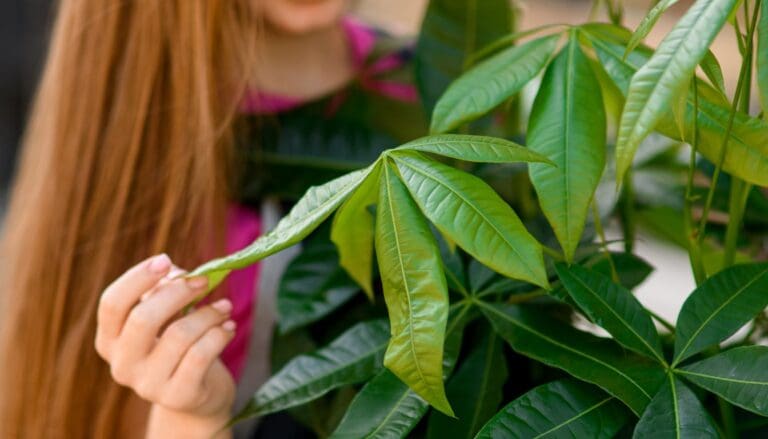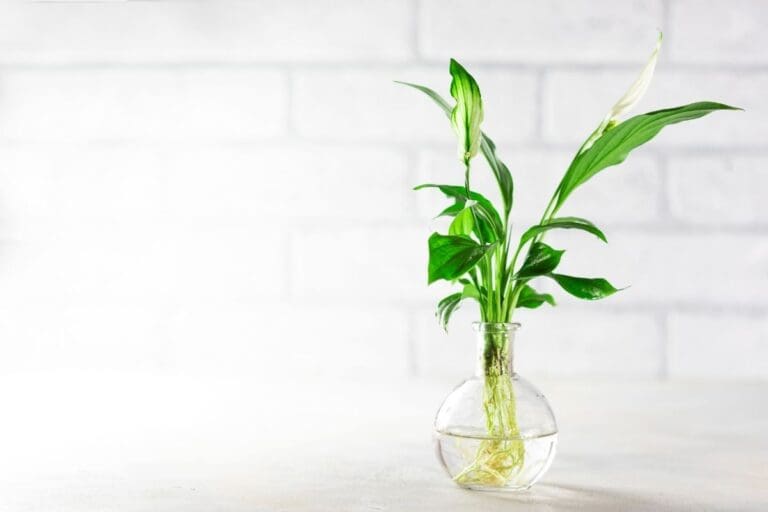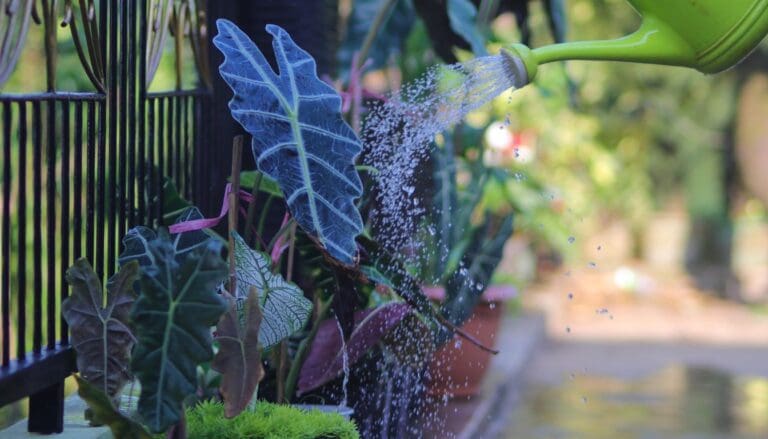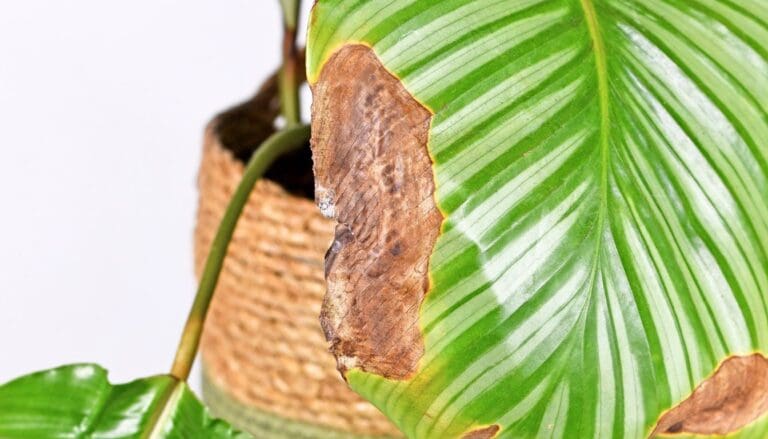Rubber Plant Leaves Turning Brown? 9 Causes & What To Do
Rubber plants have become popular due to their structure and lovely dark green leaves. But no houseplant lover would love to see the Rubber plant leaves turning brown. The situation is concerning, and there are various reasons for it.
Rubber plant leaves turn brown due to improper watering, low humidity, sunburn, wrong fertilization, pests and diseases, temperature stress, or aging. To fix these issues, remove the discolored leaves, address the actual cause, and treat it in time to prevent it from spreading.
This guide can help you if you’re facing similar issues. Here, we will explore all the potential reasons, solutions, and ways to prevent browning from reoccurrence.
I encountered multiple issues when I started gardening years back, and browning was one of them. Upon deep research, I found the cause and solved it.
But I also found various other causes of browning. Fortunately, there are solutions for each of these issues.
In this article, I will guide you through all the reasons why your rubber plant leaves are turning brown.

Please note: Simplify Plants is reader-supported. Some links in the post are affiliate links and I get a commission from purchases made through links in the post.
1. Rubber plant leaves turning brown due to irregular watering
Rubber plants enjoy consistently moist soil. Therefore, both overwatering and underwatering will be detrimental to the plant.
Rubber plant leaves turn brown due to overwatering
Overwatering suffocates the plant roots and disrupts air exchange, oxygen, and the uptake of nutrients.
Initially, the leaves will become yellow and then progress to browning. To confirm the issue, check for the following overwatering signs:
- Wilting or drooping
- Leaves are mushy
- Soggy soil
- Yellow leaves with browning at the tips
The problem can progress to root rot if not addressed initially.
Once this happens, your soil will produce a foul smell.
To confirm the issue, you must unpot the plant and check the roots.
The healthy roots are white and firm.
The brown and mushy roots are the decayed roots.
If the rotting has not progressed much, you can save the plant.
Otherwise, you have to discard it.
Rubber plant leaves turn brown due to underwatering
Though the Rubber plants are drought-tolerant to some extent, they can’t stay without water for more than 1-2 weeks.
Soon, the plant will suffer from dehydration and start wilting.
Dehydration also makes nutrient uptake difficult, leading to yellow and brown leaves.
Signs of an underwatered Rubber plant are:
- Wilting and drooping
- Yellowing
- Yellow leaves turning brown and crispy at the tips and edges
- Leaves falling off
Watering best practices
To solve these issues, you need to improve your watering practices.
If you want a routine, I suggest watering the plant every 5 to 7 days.
It can differ depending on temperature, humidity, bright light exposure, soil, seasons, etc.
So, the best method is to let the top few inches dry out before you water the plant.
You can use your finger to understand the moisture level.
Or, use a moisture meter to determine the precise moisture level.
Insert the meter 2-4 inches deep and see the readings.
Water the plant if the result is between 1 and 3. Otherwise, wait some more days.
To save an overwatered Rubber plant:
- Stop watering and shift your plant to a place with bright indirect sunlight to increase the drying process.
- Remove the discolored leaves.
- For root rot, please take the plant out, trim off the damaged roots, spray some fungicide, and repot it to a new pot with new soil.
- Drainage and overwatering are closely related. Make sure that both soil and pot have sound drainage systems.
- To treat an underwatered plant:
- Water the plant slowly. Don’t just dump a lot of water; that won’t work.
- Make holes if the soil doesn’t penetrate the soil. The water will seep through the holes and reach the roots.
- Remove the discolored leaves and wait to witness signs of recovery.
2. Soil composition and potting

Soil drainage and watering are closely related.
You might face the same watering issues when the Rubber plant’s potting mixes are incorrect.
Heavy clayey soils cause overwatering because they hold moisture and even become compact.
On the contrary, sandy soils have poor retention qualities.
It causes both underwatering and nutrient deficiencies.
Soil composition for Rubber plants
Use loamy soil that has both good drainage and retention qualities. A potting mix with peat moss, perlite, and vermiculite should work.
One potting mix recipe that I use is:
- ⅔rd houseplant potting mix (Miracle-Gro Indoor Potting Mix 6 qt)
- ⅓rd perlite (Espoma Organic Perlite)
Follow our soil article to learn about soil requirements and get some excellent soil mix recipes.
3. Humidity and air conditions turn the Rubber plant leaves brown
The next reason is humidity.
Since Rubber trees originate from warm and humid conditions, they enjoy high humidity above 50%.
Low humidity levels increase moisture loss from the leaves and soil.
The evaporation rate also increases.
It can stress the plant and trigger browning and defoliation.
It won’t happen in 1-2 days.
That much tolerance is present in this hardy plant.
You will see signs when this continues for several days to weeks.
Fortunately, the solution is easy, increasing the humidity levels, and there are several ways to do it.
Humidity for Rubber plants
First, learn the actual humidity of the room by installing a hygrometer.
Then, you can bump the humidity level with the following methods:
- For a slight increase, mist the Rubber plants regularly.
- Install a humidifier to provide accurate humidity.
- Keep a tray filled with pebbles and water and put the Rubber plant pot over it. As the water evaporates, it adds humidity. Add water to the tray whenever the level reduces.
- Put the plant close to an aquarium. It works the same way as pebble trays.
- Group multiple tropical plants to add humidity naturally. Don’t let the leaves touch each other, and allow proper air circulation while keeping the plants close.
Humidity levels should not be more than 60-65%.
That would invite diseases, especially powdery mildew.
4. Rubber plant leaves turn brown due to improper light conditions

In the native land, the Rubber plant grows under indirect sunlight.
Mimic this for the indoor Rubber plants.
Exposure to excessive direct sunlight causes sunburns.
It is easy to understand because the leaves have scorched spots that turn brown over time.
Even low-light conditions can cause browning.
Low light initially results in yellow leaves, which slowly turn brown.
The solution to this problem is simple – adjusting the light conditions.
Adjusting Rubber plant light conditions
Shift your Rubber plant to a west or east-facing window.
If it’s in the south-facing window, put on sheer curtains or Venetian blinds to filter the light.
Pay attention to the changes in the sunlight intensity throughout the day and during seasons.
A south or west-facing window is acceptable during winters but not in summers because the sun’s intensity is at its peak.
You can test the intensity by keeping your hand under the sunlight.
If the heat is intense or the shadow seems sharp, the intensity is high.
On the contrary, tolerable heat with a soft shadow indicates sunlight is suitable.
If you can’t let the plant have indirect sunlight, use Grow lights.
Rotate the pot occasionally to let all the sides of the plant receive light for adequate photosynthesis.
5. Browning in Rubber plants due to overfeeding and nutrient deficiencies

Nutrients are essential for Rubber plants.
Since they grow big and fast, adequate nutrients provide sufficient energy and promote fast and healthy growth.
Nutrient deficiency during the actively growing months can lead to yellowing and browning on the older leaves.
Sometimes, the leaves go pale, but the veins remain dark green.
It won’t happen if you miss a few doses, but when you have not fertilized your Rubber plant throughout the growing season.
Please don’t over-fertilize the Rubber plant while trying to maintain the nutrition.
When overfed, the plant absorbs the required nutrients, and the rest accumulates in the soil, causing fertilizer burns in the roots.
It further hinders moisture and nutrient uptake.
Browning starts at the tips and edges of the leaves and slowly spreads across the entire leaf.
Correcting fertilization in the Rubber plants
First, you need to treat the browning.
If you have under-fertilized:
- Water the plant and then apply a balanced liquid fertilizer.
- For dosage, check the instructions written on the label.
- Dilute the fertilizer with water and make the concentration half the recommended strength. This will prevent burns.
- If you apply less, it’s not going to hurt the plants. But don’t pour too much.
- After fertilizing, water your plant a bit to activate and spread the fertilizer.
- Observe the plant for some days and see if it grows new green leaves.
To save an over-fertilized Rubber plant:
- Flush off the soil thoroughly to wash away excess salts and improve drainage.
- Keep adding water until you see the excess draining out. Let the soil dry out, and again repeat the process.
- Do this 2-3 times until you see freshwater draining out of the potholes.
- Pause fertilization for 1-2 weeks until you observe new growth.
For a correct fertilization frequency, feed the Rubber plant once every 2-3 weeks or once a month throughout the growing season.
I prefer liquid organic fertilizer (Espoma Organic 8 Ounce Concentrated Indoor Plant Food).
It has an NPK value of 2-2-2, with fewer chances of burns.
If you want a synthetic with a slightly high concentration, use Jack’s Classic Water Soluble All-Purpose Fertilizer.
Don’t forget to dilute it with water and make the strength to half to reduce burns.
The plant will start slow growth in fall and ultimately go dormant in winter.
Cut fertilizing during the fall and stop in winter.
6. Pests on the Rubber plant turn the leaves brown
When pests attack your Rubber plant, the leaves will have mottled or deformed leaves.
These eventually turn brown and die.
Rubber plants are not very susceptible to pest infestation, but they attract aphids, spider mites, mealybugs, and scale insects.
These suck the plant sap and turn the leaves yellow, later advancing to brown.
Troubleshooting Rubber plant pests
A great way to keep the pests away from the Rubber plants is to inspect the plant and clean the leaves regularly.
If pests are already present:
- Remove the infected leaves.
- Shower your plant to dislodge the pests.
- Spray some neem oil.
- Release beneficial insects like ladybugs, lacewings, or hoverflies.
- Add rubbing alcohol to a cotton ball and wipe the suspected areas.
- If the infestation is too much, use pesticides and insecticides to kill them.
7. Root-bound Rubber plants causing browning

When a Rubber plant gets extremely root-bound, the pot will get completely covered with the roots, and the soil quality will lessen.
As a result, the soil won’t be able to hold enough water and moisture and pass it to the plant.
Due to the lack of moisture and nutrients, the plant gets stressed, triggering yellowing, browning, and drooping.
Reducing browning by repotting the Rubber plants
If you see brown leaves, check if the plant is pot-bound.
Roots come out of the drainage holes or soil surfaces and grow circularly.
Repot your Rubber plants in a pot 1-2 inches bigger than the old one with new soil.
Once repotted, provide all the requirements correctly without any mistakes.
Don’t fertilize for the first few weeks.
Since you will use new soil, it will provide enough nutrients to the plant for now.
To prevent browning and root-bound plants, always repot the Rubber plants once a year.
8. Rubber plant leaves turn brown due to repotting stress
Sometimes, you will witness browning even after you repot the Rubber plants. The reason is transplant shock.
The sudden changes in the growing conditions can shock and stress the Rubber plant.
It can further lead to wilting, yellowing, browning, and defoliation.
Minimizing repotting shock
Don’t worry. Be patient, and keep caring for the plant.
Provide adequate sunlight, moisture, temperature, and humidity.
With everything right, the plant will recover faster and experience less shock.
Avoid fertilizing for some weeks until the plant establishes and has new growth.
After some weeks, it will adjust to the new environment.
9. Rubber plant leaves turn brown due to temperature stress
Rubber plants enjoy temperatures between 60°F and 80°F.
Extremely high temperatures increase moisture loss and evaporation and dehydrate the plant.
Without enough moisture, nutrient and moisture uptake is hindered in the plant.
It will further result in browning and wilting.
Brown leaves can also occur in cold temperatures below 50-55°F.
Adjusting the temperature
Keep your plant away from large doors and windows that allow hot air or cold drafts to enter the house.
Also, keep your plant away from generators, heating systems, and air conditioners.
You can keep your Rubber plant in a room containing HVAC units, but keep at least 10 10-foot distance in between to avoid browning or other stresses.
Other reasons causing the Rubber plants to turn brown
The above reasons are the most common ones that can make the Rubber plant leaves turn brown.
Apart from these, there are a few additional reasons that can cause leaves to turn brown.
However, if you take proper care, the following reasons are less likely to occur in your Rubber plant. Let’s have a quick look:
Rubber plant diseases

Diseases such as powdery mildew and root rot can cause leaves to turn brown.
First, it begins with yellowing or brown or black spots.
Slowly, the yellowing progresses to a brown color, and the brown spots start spreading all over the leaf surface.
The best way to prevent these diseases is to correct watering practices to reduce moisture levels, maintain humidity, and improve air circulation.
If your plant is already infected, you can save it if the damage level is below 50%. To save the diseased Rubber plant:
- Isolate your Rubber plant, remove the infected leaves, and reduce moisture levels.
- Let the plant have adequate sunlight.
- If needed, spray some fungicides.
- Try some homemade fungicide recipes. Mix 1 part baking soda and 10 parts water and spray it on the infected areas.
A strong and healthy plant that receives every requirement correctly is less susceptible to diseases.
Water quality and impurities
If you have been a houseplant enthusiast, you will know that most houseplants prefer distilled or filtered water.
The minerals and harsh chemicals present in the tap water are unsuitable as they leave behind salts that accumulate on the soil surface.
This mineral buildup disturbs nutrient uptake.
Thankfully, Rubber plants are not very picky, and tap water will work.
But, it won’t be suitable if the tap water is exceptionally chlorinated and contains a high mineral content.
To avoid the risk, I always prefer filtered or distilled water.
When I have only tap water, I let the water sit overnight so that the minerals settle down or evaporate.
Then I use the water.
Rubber plant aging
Your Rubber plant may have become very old.
Browning and yellowing are mere signs of old age.
It’s a natural process.
Over time, these brown leaves will naturally wither and drop from the plant.
There is no solution here.
Take good care of the plant from its young age to increase its lifespan a little bit, but nothing much can be done.
Browning is only an issue if the plant is still young or the new leaves turn brown.
Preventing browning in the Rubber plants
Once you have treated the browning in the Rubber plants, it is time to concentrate on preventing the Rubber plant leaves from turning brown again.
Whether you are a beginner or you have just finished troubleshooting the browning, these preventive measures can be followed all the time to keep the Rubber plant from turning brown:
- Retaining the correct balance in watering can solve maximum issues. For the Rubber plants, maintain a consistently moist soil, not waterlogged or soggy. Whenever you water, allow the top 2-3 inches of the soil to dry out.
- Always use a soil mix that can drain the excess water while retaining the required moisture. Use an organic, peat-based potting mix containing perlite or vermiculite.
- Rubber plants prefer bright, filtered sunlight throughout the day. If the light from the windows is intense, use sheer curtains to filter it. If it’s too low, use Grow lights.
- Always maintain 60-80°F temperature and 50-60% humidity levels. Keep your plant away from cold and hot air drafts. Prefer humidifiers, misting, pebble trays, or group planting to adjust humidity.
- Repot your plant once a year during the spring and summer.
- Repotting shock is common. So be patient and provide adequate moisture, sunlight, temperature, and humidity to reduce transplant shock and increase recovery.
- Always keep an eye on your Rubber plant. Whenever you see any signs of distress, please find out the cause and immediately solve it to stop the problem from progressing. The plant will then easily fight back and stay healthy.
- Regularly clean the leaves to prevent any accumulation or buildup. It will keep your leaves shiny and stop bugs from nesting in the plant.
- You can mist your plant occasionally with neem oil. It can maintain humidity while keeping bugs and diseases away.
Final thoughts
Numerous reasons are responsible for brown leaves in the Rubber plants. Sometimes, you can have more than one issue at a time. Please find out the right issue and solve it.
Some issues will have specific signs besides browning to identify the correct reason and prevent misdiagnosing.
Maintain proper light, moisture levels, temperature, and humidity. Use good-quality peat-based soil. Repot once a year and take care after repotting.
Prune the Rubber plant annually during the growing season to encourage new leaf growth and promote good shape and size. Observe your plant closely to check for pests and diseases.
Early identification and quick steps will prevent the problem from spreading and help the plant fight back.
Can I use a water softener for watering the Rubber plants?
Yes, you can if you have highly chlorinated tap water. Rainwater is also a good idea, provided you collect it in a clean container.
How do I understand if I am overwatering or underwatering my Rubber plant?
Since both cause browning, wilting, or yellowing, it is difficult to identify. Check the soil for confirmation. Wet soil means overwatering and hard and dry soil means dehydration.
Reference: Ficus Elastica Wikipedia
Recommended Garden Supplies
| Product Image | Our Recommended Gardening Supplies | Check Offers! |
|---|---|---|
Top Top
Top
Top
Top
Top
Top
Top
Top | rePotme Houseplant and Tropical Classic Potting Soil Mix | Check Offer On Amazon |
 Top
Top
Top
Top
Top
Top
Top
Top | Espoma Organic Indoor Plant Food | Check Offer On Amazon |
 Top
Top
Top
Top
Top
Top
Top
Top | GooingTop LED Grow Light 6000K Full Spectrum Clip Plant Growing Lamp | Check Offer On Amazon |
 Top
Top
Top
Top
Top
Top
Top
Top | Soil Moisture Meter | Check Offer On Amazon |
 Top
Top
Top
Top
Top
Top
Top
Top | Govee Hygrometer Thermometer, Bluetooth Enabled! | Check Offer On Amazon |
 Top
Top | LEVOIT Humidifiers for Large Room(Best For Plants) | Check Offer On Amazon |
 Top
Top
Top
Top
Top
Top
Top
Top | Upgraded DIY Automatic Drip Irrigation Kit, 15 Potted Houseplants Support | Check Offer On Amazon |
 Top
Top
Top
Top
Top
Top
Top
Top | Stainless Steel Heavy Duty Gardening Tool Set | Check Offer On Amazon |
 Top
Top
Top
Top
Top
Top
Top
Top | Bonide Insecticidal Soap | Check Offer On Amazon |
 Top
Top
Top
Top
Top
Top
Top
Top | Bonide 32 oz Spray Neem Oil for Organic Gardening | Check Offer On Amazon |
 Top
Top
Top
Top
Top
Top
Top
Top | Garden Safe Fungicide | Check Offer On Amazon |






